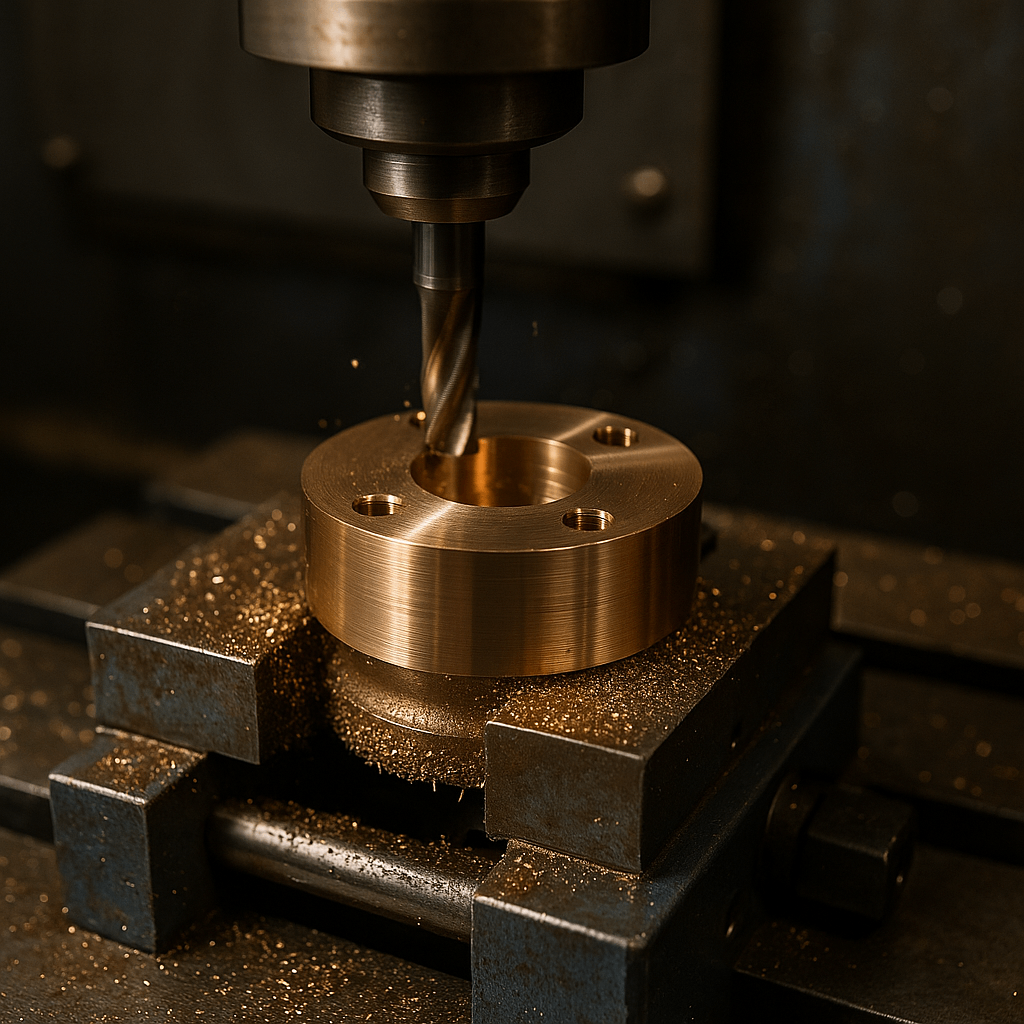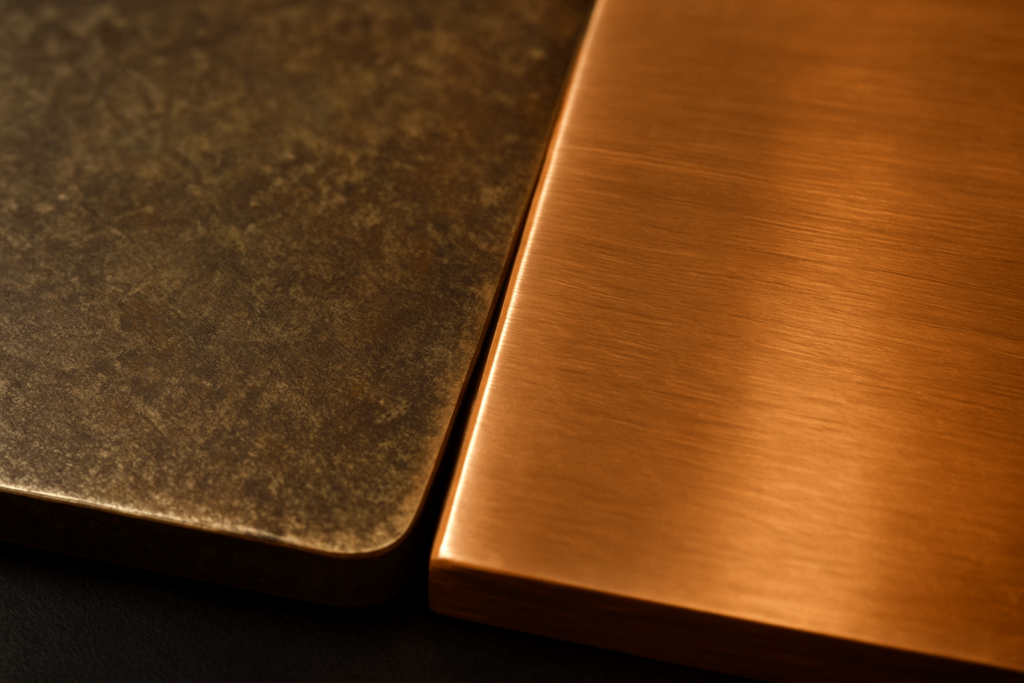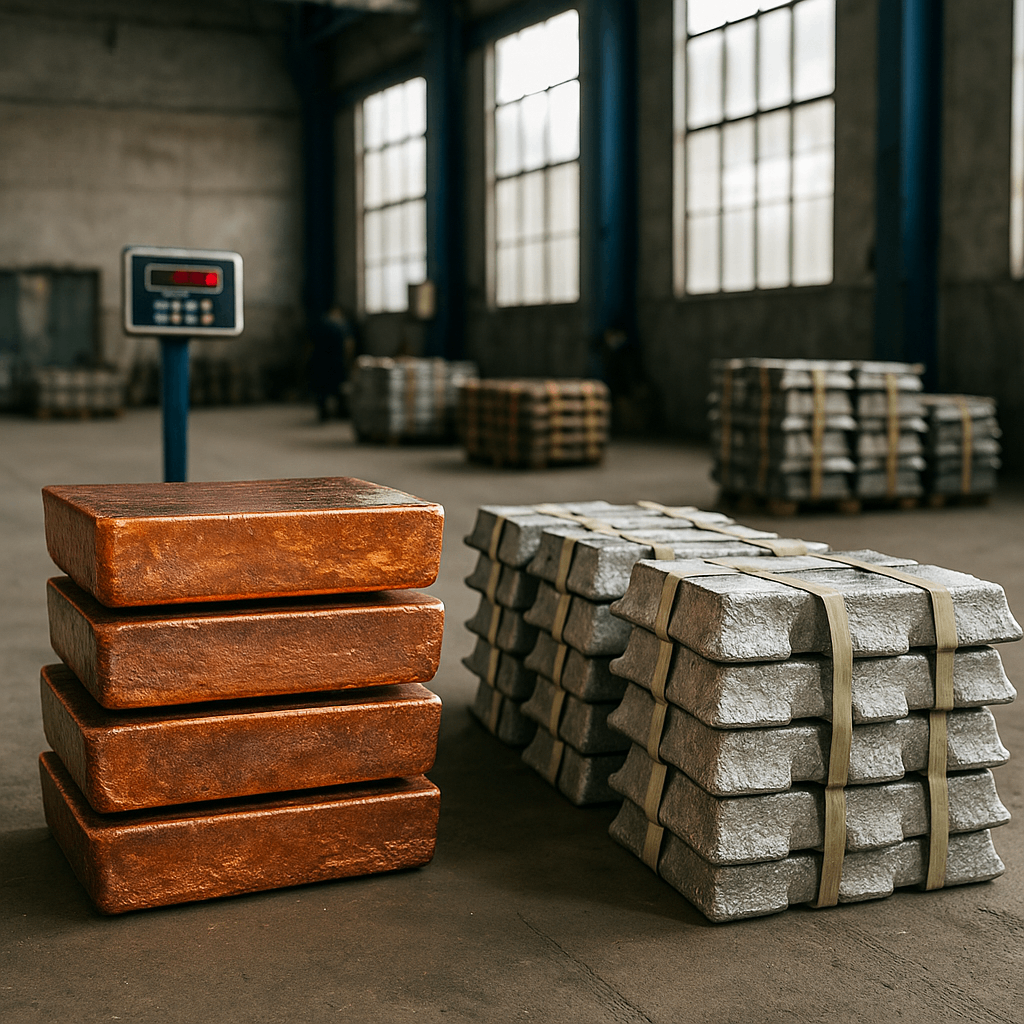What Bronze Means for Global Procurement
Global procurement professionals in sectors like industrial automation, marine construction, energy, and electronics increasingly rely on bronze due to its superior mechanical and corrosion-resistance properties. From large gear blanks to intricate CNC-milled bushings, understanding how bronze is made is crucial to making cost-effective and performance-driven sourcing decisions.
Why Bronze? Procurement-Driven Material Advantages
Bronze is a copper-based alloy, commonly mixed with tin and sometimes alloyed with elements like aluminum, manganese, or phosphorus. Its strength, low friction, and excellent corrosion resistance make it ideal for high-wear environments.
Buyers often compare copper vs bronze vs brass when selecting materials. Bronze stands out for its higher tensile strength than brass, better casting consistency, and lower maintenance compared to unalloyed copper. For reference, the difference between brass and bronze lies in the alloying: brass is copper and zinc; bronze is copper and tin.
Procurement professionals appreciate that bronze parts support tight CNC tolerances, perform well in seawater environments, and offer low lifecycle cost. Additionally, aluminum bronze and phosphor bronze further enhance wear and fatigue resistance—ideal for bearings, gear housings, and industrial springs.
From Ore to Alloy: Quality Starts with Verified Inputs
For buyers managing large-volume orders, it’s important to confirm that alloy quality starts with controlled inputs. Manufacturers source high-purity copper cathodes (>99.9%) and tin concentrates in compliance with LME Grade A and international sourcing standards. These inputs may be virgin-sourced or recycled under ISO 14001 certification.
Interestingly, recycled bronze now accounts for over 40% of global supply. Sustainable sourcing not only reduces carbon emissions but also improves cost control for buyers. Therefore, suppliers must document material origin, chemical composition, and compliance with REACH and RoHS.
What buyers should expect:
Batch-level chemical analysis reports
Copper vs tin alloy ratio verification
Traceability to country of origin and smelting plant
Alloying and Casting: Consistency Drives Confidence
In modern foundries, bronze is alloyed using electric or induction furnaces with real-time process monitoring. Maintaining a tin content between 10–12% ensures optimal hardness and casting fluidity.
Unlike pure copper, which is too soft, bronze’s tin content hardens the material without making it brittle. Additionally, unlike brass, which can suffer from dezincification, bronze has better corrosion resistance, particularly in seawater. These distinctions make bronze a better fit for critical infrastructure and marine procurement projects.
To maintain consistent alloy performance, engineers conduct spectrographic analysis (OES or XRF) on production batches. Foundries adhering to ASTM B584 or EN 1982 maintain part-to-part consistency across scale production. Buyers focused on tight lead time and minimal part rejection should request:
Ingot and melt data for each lot
Foundry test logs
Bronze alloy certification matching order specs
Shaping and Machining: Matching Process to Volume and Precision
After alloying, bronze is shaped using the method that best suits order complexity, volume, and tolerance needs. Here’s what buyers should know:
| Casting Method | Best For | Buyer Insight |
|---|---|---|
| Sand Casting | Large parts with moderate detail | Cost-effective, flexible mold design |
| Die Casting | High-volume precision components | High repeatability, upfront tooling investment |
| Centrifugal Casting | Tubular or rotating parts | Excellent density and concentricity |
| Investment Casting | Complex geometries, low batches | Excellent detail, ideal for custom prototypes |
Post-Casting Machining and Performance Tuning
Buyers often require CNC machining to achieve tolerances as tight as ±0.05 mm, ensuring compatibility with demanding applications. Engineers favor bronze in CNC workflows for its clean chip formation and low tool wear. Keywords like bronze CNC, bronze machining, and bronze gear tolerances are commonly searched by buyers evaluating part performance.

Surface Finishing: Extending Product Function and Aesthetics
The color of bronze vs copper varies by alloy—bronze often exhibits a duller, golden-brown hue compared to copper’s reddish shine. Patinas develop over time or can be chemically induced for decorative use. In precision parts, uniform surface roughness is key.
Surface finishing options include:
Polishing (for Ra < 1.6 µm in sealing surfaces)
Bead blasting (non-reflective finishes)
Lacquering or epoxy coating (corrosion prevention)
Custom patinas (architectural bronze applications)
Buyers Should Specify the Following Surface Parameters:
Ra values for critical fits
Coating requirements (based on usage: indoor, marine, or high-heat)
Finish uniformity across large batches

Inspection and Quality Assurance: Beyond Visual Confirmation
In today’s sourcing environment, OEM buyers increasingly expect more than dimensional compliance—they also prioritize alloy chemistry stability, internal integrity, and surface quality across all parts. Manufacturers implement full-lot testing, including:
OES composition verification
Ultrasonic or X-ray testing for internal flaws
CMM reports for dimensional accuracy
To support recurring orders and quality consistency, suppliers often provide First Article Inspection (FAI), PPAP documentation, and ongoing Cp/Cpk studies. These reports reduce batch rejection risks and improve production predictability.
Relevant certifications include:
ISO 9001 (quality)
ISO 14001 (environmental)
REACH & RoHS (EU compliance)
How Bronze Solves Industry-Specific Challenges
In marine and outdoor structural applications, buyers often ask: can bronze rust? The answer: bronze doesn’t rust like iron—it forms a stable oxide layer that prevents deeper corrosion.
For electrical procurement, phosphor bronze provides superior conductivity and fatigue resistance. Buyers comparing copper vs bronze for contacts should factor in bronze’s higher durability under cyclic stress.
In decorative hardware or branding components, bronze color vs copper color can influence final product presentation. Buyers should test samples across lighting environments.
Compared to aluminum and stainless steel, bronze offers a unique blend of cost-efficiency and process adaptability. Additionally, bronze maintains integrity under fluctuating thermal conditions—an advantage in energy applications.
Frequently Asked Questions (FAQ)
Q1: Is bronze a metal or an alloy?
A: Bronze is an alloy made primarily of copper and tin. It may also contain small amounts of elements like aluminum, manganese, or phosphorus to enhance specific performance properties.
Q2: What’s the difference between copper, brass, and bronze?
A: Copper is a pure metal. Brass is an alloy of copper and zinc, while bronze is an alloy of copper and tin. Bronze typically offers greater corrosion resistance and mechanical strength than brass.
Q3: Can bronze rust?
A: No. Bronze does not rust like ferrous metals. Instead, it forms a stable oxide layer, or patina, that helps prevent further corrosion, making it ideal for marine and outdoor applications.
Q4: How does bronze compare in cost to brass?
A: Bronze is usually more expensive than brass due to the cost of tin and the alloy’s enhanced properties. However, its superior durability often results in lower lifecycle costs.
Q5: What is bronze material composition?
A: Standard bronze is made from about 88–90% copper and 10–12% tin, though the exact composition can vary depending on application needs (e.g., aluminum bronze, phosphor bronze).
Bronze continues to lead in mid- to high-precision components across sectors. It’s reliable, flexible, recyclable, and globally compliant. The material’s ability to meet casting, machining, and finishing specs consistently makes it a cornerstone in industrial procurement.
For procurement teams, aligning material properties with application demands—whether marine durability, CNC precision, or global compliance—is essential. A qualified bronze manufacturer should demonstrate process transparency and responsiveness throughout the RFQ stage and production cycle.
Contact our team today to discuss your project requirements—we’re ready to support your success.



